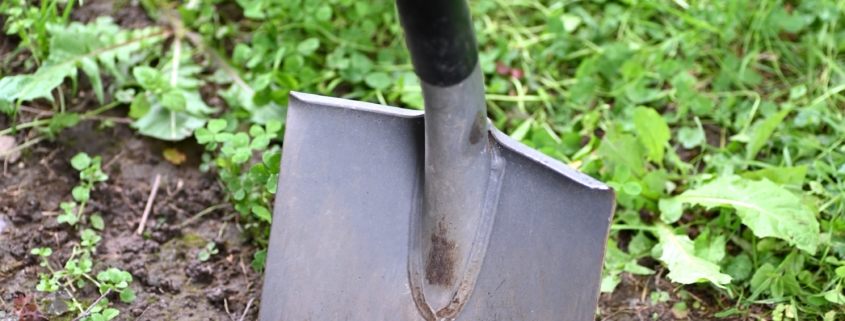What Are the Benefits of Fall Planting?
Are you a diehard gardener who just doesn’t want to say goodbye to playing in the dirt and coaxing beautiful flowers, fruits, and vegetables from the earth? Do you want to get a jump on next year’s display or harvest? Are you a homeowner who wants to extend the growing season so your eyes see more than last season’s showstoppers turning brown? You are in luck. Autumn is an optimal time to introduce new life into your landscape — even if it may take a few months to see the fruits (or veggies) of your labors! Explore the benefits of fall planting, and let’s get growing.
The Benefits of Fall Planting
Autumn is more than pumpkin spice lattes, football, and sweater weather. It is also a great time to work on your landscape. Fall planting allows you to prepare your outdoor space for a healthy growing season come spring; it can also add beauty and dimension now. Who couldn’t use a little more color this time of year!
Why plant in fall?
- The air may be chilly but the soil is still warm. In fact, it is warmer in autumn than it is in spring at about 55°. This allows roots to become fully established and to absorb the nutrients they need to thrive.
- Rain is a part of life in the fall, and this is good news for new planting. Seeds and young plants require regular watering, and nature does most of this work for you.
- Transplanting trees and shrubs in the summer is stressful for them; it can impact their ability to grow strong roots and establish themselves in a new setting. The cooler air of fall helps them “adjust.”
- At this time of year, there is far less competition from weeds, so the plants or bulbs you put into the ground don’t have to fight for nutrients.
- There is also less pest activity in autumn, which is great for the plants and the gardener/landscaper. Without having to swat away flies, mosquitos, and other insects, life out in the yard is much more enjoyable.
- It’s fun. Reason enough! The cooler temperatures and marked decrease in pests make working outdoors and/or enjoying the results of a landscaper’s efforts a true pleasure.
Are you sold on fall planting? Great! Now… What varieties do better this time of year?
The Best Options for Fall Planting
Many plants not only tolerate fall weather conditions but prefer them.
Enjoy Later
One of the major benefits of fall planting is that it sets you up for a spectacular spring. Your seeds or bulbs will have the opportunity to overwinter, staying snug and well-fed in the ground. Try:
- Pansies and violas. These flowers deliver a delightful pop of color, just when you need it most. Cold hardy options, such as Cool Wave, can be planted in areas where the ground freezes… which is here! Cover them with a thick layer of mulch to protect them from freezing/thawing cycles.
- Spring bulbs. The variety available is astounding. Daffodils and crocuses are early spring favorites, and you can also plant hyacinth, bluebell, allium, snowdrop, dwarf iris, tulips, and more. Many of these are deer- and pest-resistant, so you don’t have to worry about hungry critters eating your investment! Be sure to choose options that are appropriate for your hardiness zone (typically, 5b, 6a, and 6b for Indiana). Bulbs don’t need mulch; just make sure to water them regularly until the ground freezes, if you do not get sufficient rainfall.
- Garlic. If you rely on this seasoning/spice to add life to your dishes, fall is the time to plant. You can use individual cloves taken from a bulb of garlic. Plant the larger ones, and they’ll form new heads with between 5-10 cloves each. Cover with four to six inches of mulch and look forward to a tasty late spring/summer.
- Grass. Plant your cool season grass (e.g., Kentucky bluegrass) in the fall; this gives the seed time to develop strong roots. In the spring and summer, you’ll be enjoying a lush, green lawn. Keep new seed watered and avoid foot traffic.
Enjoy Now
If you want to extend the beauty of your spring/summer landscape, there are several options when it comes to fall planting. They will bring color (and taste) to your outdoor space. Try:
- Beets.
- Kale.
- Chard.
- Spinach.
- Radishes.
- Carrots.
These nutritious and delicious plants germinate and grow quickly, producing a bountiful harvest for fall. Some, like kale, even taste better after a few frosts. Be sure to check optimal planting times; for example, spinach is best put in directly by mid-September, while you can grow radishes from seeds up until October.
- Trees and shrubs. As mentioned, fall’s cooler temperatures reduce the stress on trees and shrubs during the transplanting process. From hydrangea, roses, and rhododendrons to maple, elm, and sycamore, many varieties love fall, and you can enjoy them now and later. Lay a thick cover of mulch around the shrub or tree to insulate it and ensure it retains water.
- Perennials. Take some time to divide and conquer. If you have a monster hosta, for example, split it and transfer the “new” plant(s) to another spot. Again, a simple layer of mulch will keep hardy perennials like these protected throughout the winter.
Rely On the Experts
To fully realize the many benefits of fall planting, work with an experienced landscape team. They will know what to plant and when, how to care for them in the fall and prepare them to overwinter, and how to ensure they look their best in the spring. And they will give you back your time and energy so you can thoroughly savor the season.
Fall planting is about taking satisfaction in the season and planning ahead for next year. Another way to do that is with Winter Enrollment. This is an opportunity to make your dream outdoor space a reality. Book a free consultation and see how it works.



